You are Electric!
A Rabbit Hole Into Electrolytes, Minerals & What Keeps Us Charged & Hydrated!
I don’t know about you, but I’ve heard a lot about hydration lately. From doctors to influencers to your neighbor down the street—everyone’s carrying around a giant water bottle, and staying hydrated has become its own kind of status symbol. Stanley cups are practically a fashion accessories (not sponsored).



But here’s the thing: drinking more water isn’t always the answer for hydration. You can sip all day long and still feel tired, foggy, or strangely thirsty… sound familiar? That’s because hydration isn’t just about water—it’s about minerals.
You are electric. Your cells rely on a delicate balance of minerals to fire, communicate, move, and heal. Without them, water alone doesn’t do much. It’s like pouring water into a sponge that can’t absorb it.
This post is for the nutrition enthusiasts, the active women syncing with their cycles, the food-as-medicine believers, and the hot-weather thrivers who know there’s more to wellness than just checking off eight glasses a day.
Join me on this Rabbit Hole, and together, we’ll explore:
What Electrolytes Really Are & Why We Lose Them
How to Replenish Them Through Whole Foods and Small Intentional Shifts.
What Hydration Looks like Across Your Menstrual Cycle
Plus: easy swaps, a printable mineral water guide, a mineral rich shopping list, and a deeper understanding of why hydration starts inside the cell.
By the end, you’ll understand hydration as a dynamic, mineral-driven process—and hopefully feel more equipped to support your body in the heat, in your workouts, and across every phase of your cycle.
Without further ado.. Let’s go down The Rabbit Hole
So… What Are Electrolytes?
According to the Cleveland Clinic, “electrolytes are substances that have a natural positive or negative electrical charge when dissolved in water.” And since the human body is about 60% water, nearly every fluid and cell depends on these minerals to function properly. This is why having proper hydration is so critical.
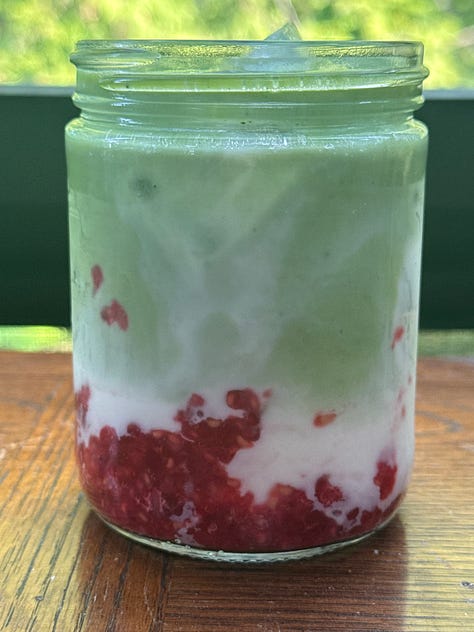
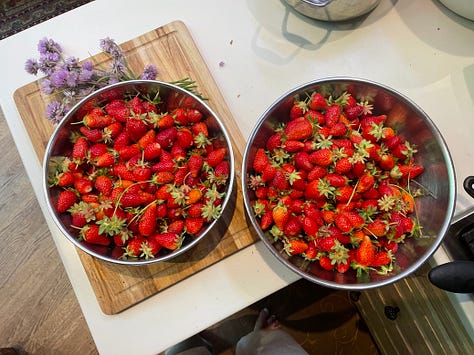
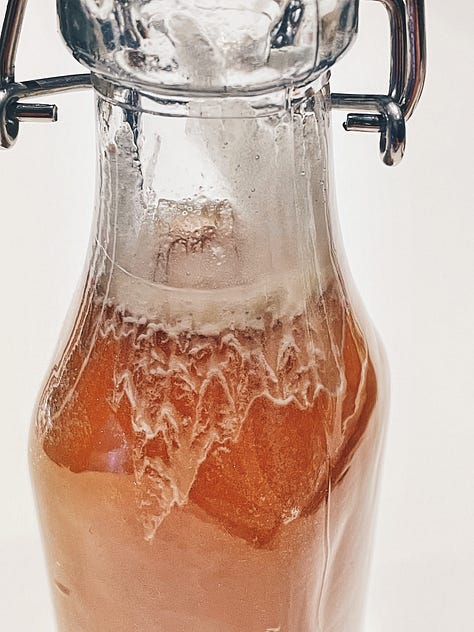
Think of electrolytes as your body’s ✨spark plugs✨ They’re tiny, electrically charged minerals that keep everything in motion—fluid, energy, nerve signals, and muscle strength. They’re the reason your body can absorb hydration. Electrolytes regulate chemical reactions, move nutrients into your cells and waste out, support fluid balance, power your heartbeat, sharpen focus, aid digestion, and help your muscles fire and recover.1 In other words, you are electric!
Why We Lose Electrolytes
You don’t have to be running a marathon, or doing some kind of extreme body bootcamp to lose minerals. You don’t even have to break a sweat. Loosing minerals is part of every day life. Every workout, cup of coffee, glass of wine, bathroom break, moment of stress, sauna session, menstrual cycle—they all pull minerals from your reserves. Even something we’ve been taught to do more of—drinking water—can deplete you if it’s not done with balance. When you’re constantly sipping plain water without replenishing minerals, you can dilute your electrolytes and create more imbalance than you realize.
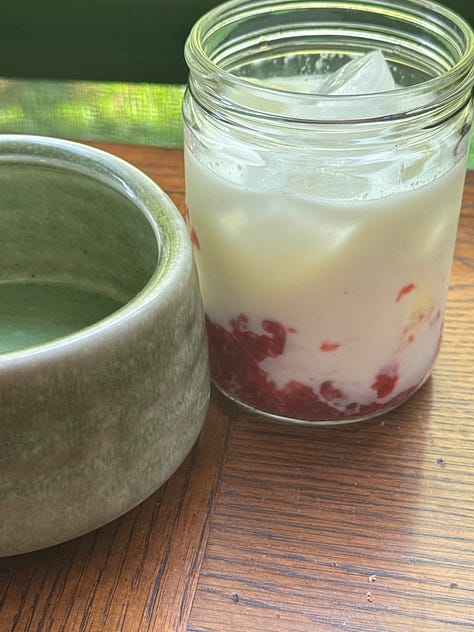
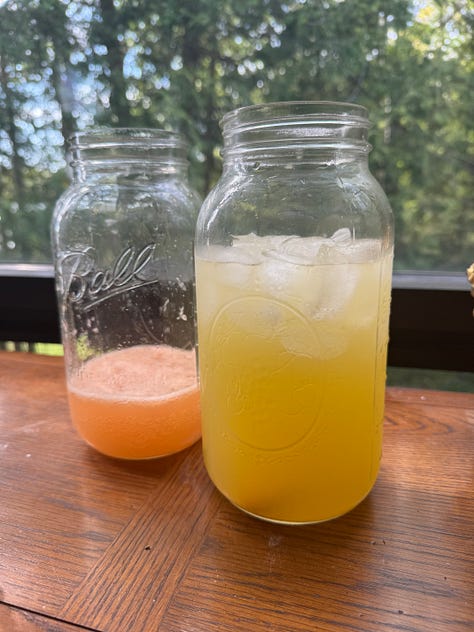

And here’s where I want to pause and say something important:
This post isn’t here to scare you or make you feel like you’ve been doing it wrong.
It’s not about creating food rules or demonizing filtered water or coffee. I love both.
It’s about getting curious, asking questions, tuning in, and understanding that even small lifestyle patterns can *quietly* drain your mineral stores— But you have the power to restore those mineral stores, and through education and learning more, you may regain your confidence in knowing that.
This is not going to look the same for everyone. There’s no shame, no perfectionism here.
Just an invitation to make informed, aligned choices that work for your body and season of life.
Let’s talk about the signs.
We usually associate dehydration with thirst. But mineral imbalance shows up in more subtle—and often overlooked—ways:
We tend to reach for water—or willpower. But often, our bodies aren’t asking for more. They’re asking for replenishment.
But, why is this now such an issue? Our grandparents didn’t have to think about electrolytes, or that water won’t replenish what our bodies are craving. True! that’s because modern life has quietly stripped minerals from our everyday routines:
Our soils are depleted
Our water is filtered (for good reason), but also stripped of trace elements
Our food is rushed, packaged, processed, resulting in a compromised product
While it’s hard to quantify exactly how many our ancestors consumed, traditional diets likely offered a far more diverse and naturally occurring mineral profile than most modern meals today. Even if you eat clean and drink plenty of water, your body may still be running low on the minerals that keep you steady, energized, and resilient.
This isn’t a fear-based message.
It’s an empowering one: once you understand what’s being lost, you can begin to restore it—gently, consistently, and with intention.
Replenishing with Real Food: Nature’s Electrolyte Sources
It’s tempting to reach for the quick fix, but nature already solved this problem for us—beautifully, simply, and effectively with whole foods.
Whole foods, meaning fruits, vegetables, whole grains, meat, dairy, and any single ingredient food you can think of contain not just electrolytes, but the enzymes, cofactors, and trace minerals that help your body use them.2 And when we rely on real food as our foundation—rather than just “quick fixes”—we support hydration in a way that’s sustainable, nourishing, and actually works with our biology.



What About Electrolyte Powders and Supplements?
I often hear questions about supplements and powders. My thoughts? They can be helpful. Especially when you're sweating a lot, traveling, fasting, or needing a quick recharge — I like to think of these as a quick band-aid, something you put on now and address with more intention later. A quality electrolyte mix can give your body a clean, fast-acting dose of sodium, potassium, and magnesium—often without sugar or fillers.
But, in my opinion, they shouldn't be the foundation. As someone who values both lived experiences and research, I always come back to a whole foods approach. Not labeling supplements or packaged goods as “bad” but recognizing that processed (no matter how pure the intent of the brand) is not what nature made perfect. There are many cofactors, enzymes, and trace minerals that help our bodies digest and create energy, why (if given the option), not choose what nature has created in balance with more bioavailable elements. Plus, whole food produce is more affordable, and incredibly delicious, nourishing, and refreshing.
My philosophy is always add, don’t subtract. And that means asking: how can I bring back what life *quietly* takes away?
Natural Electrolytes
We know of 16 essential minerals that our bodies need daily. Beyond those, dozens of trace minerals exist in nature—found in wild-grown plants, mineral-rich soil, and natural spring water.
The main players in this system are electrolytes like sodium, potassium, magnesium, calcium, chloride, and phosphate—but they don’t work alone. They rely on a powerful supporting cast of trace minerals: zinc, selenium, copper, iodine, and more—micronutrients that fine-tune your hormones, support your immune system, and fuel your energy metabolism.3
Main Minerals
Sodium:
Function: Maintains fluid balance, supports nerve transmission, and is vital for muscle contractions.
Why it matters: Too little can lead to dizziness and fatigue; too much can raise blood pressure.
Sources: Sea salt, bone broth, olives, miso, fermented foods like pickles
Potassium:
Function: Helps regulate heartbeat and nerve signals, supports muscle function, and counters excess sodium.
Why it matters: A low-potassium, high-sodium diet increases the risk of hypertension.
Sources: Bananas, sweet potatoes, coconut water, avocados, leafy greens.
Magnesium
Function: Essential for over 300 enzyme reactions, including energy production, muscle relaxation, and blood sugar regulation.
Why it matters: Often depleted by stress, caffeine, alcohol, and intense exercise.
Sources: Dark chocolate, almonds, pumpkin seeds, leafy greens, mineral-rich teas (like nettle).
Calcium
Function: Builds bones, helps with nerve signaling and muscle function (especially contractions), and supports blood clotting.
Why it matters: Plays a large role in hormonal signaling and PMS symptoms.
Sources: Dairy (especially raw or cultured), sardines with bones, tahini, leafy greens.
Chloride
Function: Maintains fluid balance and proper stomach acid levels (HCl).
Why it matters: Vital for digestion and immune support.
Sources: Sea salt, kelp, olives, celery.
Phosphate
Function: Found in every cell; helps form bones and teeth, produces ATP (energy), and builds DNA and cell membranes.
Why it matters: Often overlooked, but critical for growth, repair, and vitality.
Sources: Animal proteins, legumes, nuts, and seeds.
Key Trace Minerals
Zinc
Function: Supports immunity, wound healing, hormone production, and skin health.
Why it matters: Depleted during illness, stress, or heavy sweating.
Sources: Pumpkin seeds, beef, shellfish (if tolerated), chickpeas.
Selenium
Function: Acts as a powerful antioxidant, supports thyroid hormone conversion, and protects cells from oxidative damage.
Why it matters: Soil-dependent—many people are unknowingly deficient.
Sources: Brazil nuts (just 1-2 a day), eggs, sunflower seeds.
Copper
Function: Helps with iron absorption, energy production, and neurotransmitter function.
Why it matters: Works in balance with zinc—too much zinc without copper can cause imbalance.
Sources: Organ meats, sesame seeds, cashews, cacao.
Iodine
Function: Required to produce thyroid hormones that regulate metabolism, energy, and menstrual health.
Why it matters: Deficiency can lead to hypothyroidism and irregular cycles.
Sources: Seaweed, iodized salt, fish, and dairy.
You don’t need to change everything at once. Try these simple swaps to gently increase your mineral intake throughout the day:
Sea salt → instead of table salt
Raw honey → instead of white sugar
Try seaweed snacks (like these!)
A handful of nuts or seeds (bonus if you sprout them first!)
Raw or cultured dairy products (Goat cheese, raw milk, kefir, plain yogurt)
Bone broth (especially mineral-rich when simmered with bones, herbs, and vinegar)
Coconut water (with a pinch of sea salt)
Herbal infusions like nettle, raspberry leaf, burdock, or hibiscus (naturally rich in minerals)
Shilajit — an incredible source of minerals
Fermented foods (plus, gut health!)
hydrating fruits ( Try my electrolyte fruit salad with a mini dive into how each ingredient supports hydration)
Or… Build-Your-Own Mineral Water
Here's a simple, customizable guide to upgrade your water from flat to functional:
Shake it. Sip it. Let it nourish you.
This can be your morning mineral primer, post-workout refresher, or just a better way to hydrate throughout the day—especially during hot or hormonally sensitive times.
You don’t need to overhaul your life. You don’t need to eat perfectly.
You just need to start adding back the pieces that support your system.
For Mineral-Rich Recipes — click here!
A Gentle Note on Balance
As with everything in wellness, more isn’t always better.
Yes—your body needs electrolytes. But that doesn’t mean you need to start salting every glass of water or loading up on powders and supplements. Like all minerals, electrolytes thrive in balance. Too much of one (especially sodium or potassium) can throw off your system just as easily as too little.
Start simple.
A pinch of sea salt in your water.
Fresh fruit with natural sugars and minerals.
A homemade drink with citrus, honey, and trace-rich ingredients.
Support doesn’t have to be extreme—it just has to be thoughtful. Tune into your body. Start with one shift at a time. Let it be about replenishing, not overcorrecting.
Your body knows how to find its rhythm. You’re just giving it a little help getting there.
Minerals, Hormones & the Female Body
For women, mineral needs fluctuate across the menstrual cycle. Your body isn’t static—it’s cycling, shifting, shedding, and rebuilding.



Here’s how it connects:
During your period, you lose iron, magnesium, and sodium. That’s often why cravings for salt, chocolate, or red meat kick in.
Foods to help support your minerals during this time: leafy greens or kale + citrus, lentils, chocolate, lean meats, quinoa, dark chocolate, sea salt, and herbal teas.
In the luteal phase (post-ovulation, pre-period), magnesium, calcium, and potassium become especially important for mood, muscle relaxation, sleep, and bloat reduction.
Foods to help support your minerals during this time: Milk, cheese, and yogurt, leafy Greens, dates, tofu, sardines (with bones), banana, almonds, apricots, potatoes, pumpkin seeds, black beans, dark chocolate, sea salt, and herbal teas.
Low caloric intake and adding stress to your body can deplete minerals further—affecting thyroid function, adrenal health, and period regularity.
Read more about how you can support your menstrual cycle in my Thesis: Here!
And This Brings Us Back to the Heart of the Matter
You are electric.
Your body isn’t just thirsty for more water—it’s craving direction, minerals, and the kind of nourishment that only real food can provide. In a world that constantly asks us to cut back, restrict, and perfect, I hope this post reminds you that health often starts with adding back in. Add color. Add flavor. Add intention. Add minerals.
Not all at once. Not overnight. But gently. Thoughtfully. Consistently.
If this Rabbit Hole taught you something new, encouraged you, or even just sparked a little curiosity—I’d love to hear about it in the comments. What are you enjoying about these deep dives? What would you love to see more of? Your feedback helps shape what comes next.
If this post resonated with you, consider resharing it with a friend, posting it to your story, or forwarding it to someone who might benefit. Every share helps spread the message and grow this community of curious, wellness-minded souls. It truly means the world.
Let’s keep learning and restoring together
— Victoria Louise
https://www.ncbi.nlm.nih.gov/books/NBK541123/
http://dx.doi.org/10.55248/gengpi.4.823.50408
For more information on Trace Minerals https://www.ncbi.nlm.nih.gov/books/NBK230971/


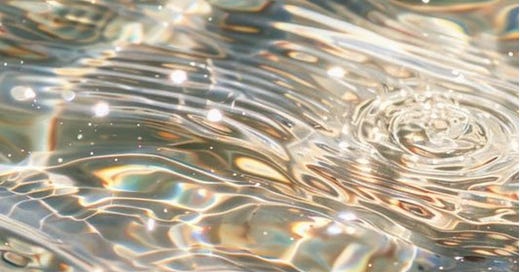


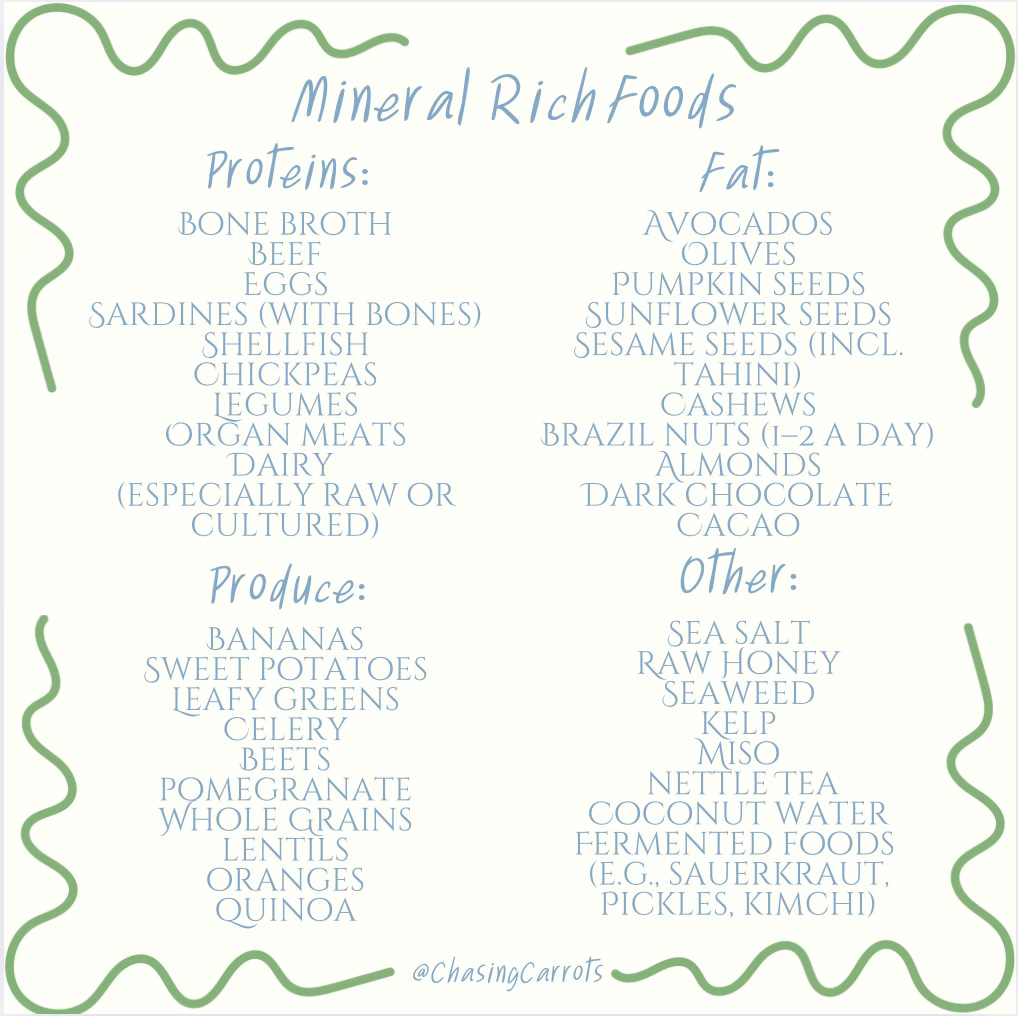
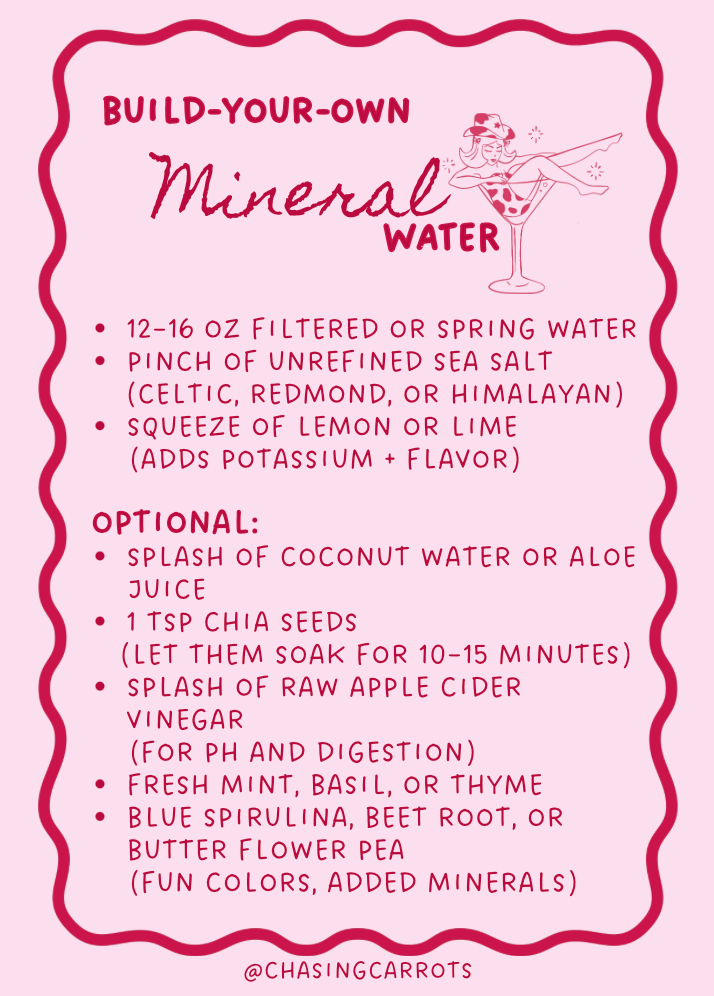
A wonderful deep dive that breaks it down easily for all to understand. I love how you connect everything back to whole foods!
Hi Victoria! I so enjoyed reading this deep dive. As a fellow writer in the health & food space, it is always fun to read a different voice share on what supports our bodies well. I do seed cycle and was excited to read more of the science behind it as well!!